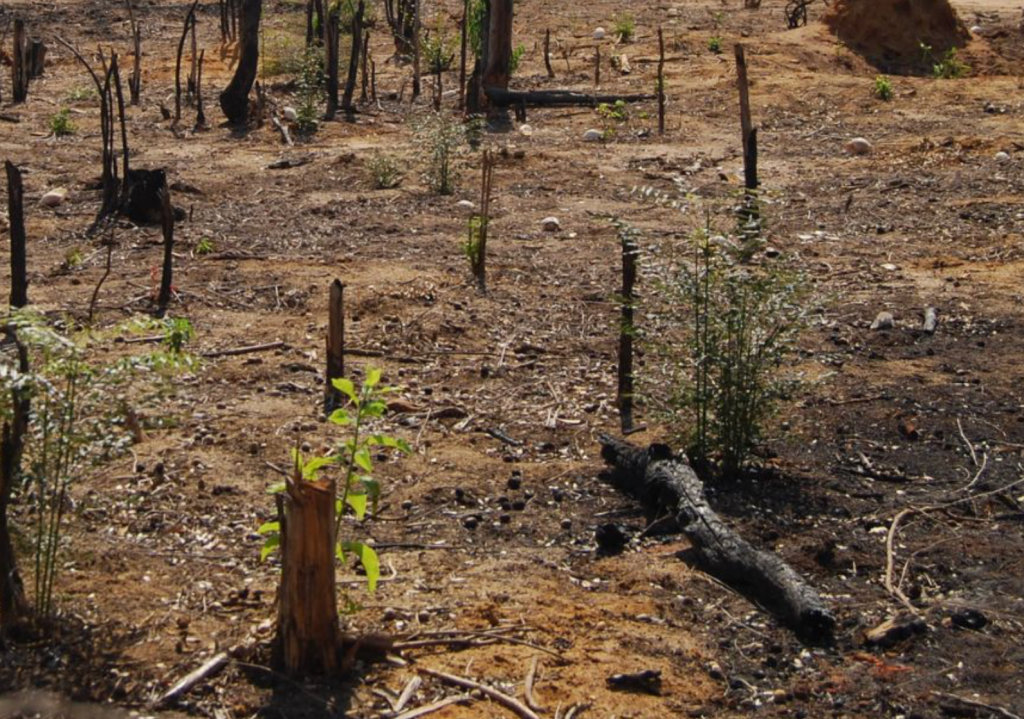Written By: Faith Jemosop
Nearly 200 people have been confirmed dead and over 3,000 displaced in Mokwa, Niger State, following one of the worst flood events in Nigeria’s history. Officials say that more than 1,000 people are still missing, with fears that many have been swept away by the raging waters. This natural disaster, which struck in late May 2025, has left behind a trail of destruction, wiping out homes, destroying bridges, severing road links, and displacing entire communities.
While seasonal rainfall is expected at this time of year, experts and environmentalists argue that this tragedy is not just a product of weather but a direct consequence of climate change. The floods were caused by an unprecedented downpour, the type that used to be a once-in-a-century event but is now becoming increasingly common. According to meteorological data, Mokwa received over 300mm of rain in less than 48 hours, a deluge far above historical averages.
This event reflects a broader climate pattern where extreme weather events, heatwaves, floods, and droughts are increasing in both frequency and intensity. These changes have disproportionately affected regions like Niger State, which lack the infrastructure and resources to cope with such shocks.
False Alarm Over Dam Collapse, But the Damage Remains
Initial social media reports suggested that the disaster may have been linked to a dam collapse. However, Nigeria’s Federal Ministry of Water Resources quickly debunked this, confirming that the dam structure near Mokwa remained intact. The flooding, officials clarified, was entirely the result of uncontrollable surface runoff due to torrential rain, blocked waterways, and degraded catchment areas.
Unfortunately, such misinformation reflects a broader problem: poor communication and lack of disaster preparedness. Communities were neither warned nor evacuated in time, a tragic failure that likely contributed to the high death toll.
Infrastructure Failure and Human Loss
The flooding not only claimed lives but also crippled critical infrastructure. Roads leading in and out of Mokwa are now impassable. Bridges collapsed under the weight of rushing water. Entire settlements were swept away. Farmers lost hundreds of hectares of planted crops mostly maize, cassava, and millet right before harvest.
Also read: What’s Fuelling Sierra Leone’s Climate Crisis?
The economic cost is staggering. Local government authorities estimate over ₦12 billion ($8 million USD) in damages. But beyond material losses, the emotional toll is incalculable: mothers searching for children, children orphaned, entire families rendered homeless.
“We were sleeping when the water started entering our rooms. We barely escaped with our lives,” said Zainab Adamu, a resident of Mokwa, now living in a temporary camp. “Everything we owned is gone.”
Niger State as a Climate Hotspot
Niger State is not new to flooding, but experts say 2025’s disaster marks a turning point. The state lies in Nigeria’s Middle Belt, a region increasingly referred to by climate scientists as a “transition zone” where humid tropical weather from the south and arid Sahelian patterns from the north collide.
According to the Nigerian Meteorological Agency (NiMet), the area is already experiencing higher-than-normal temperatures and changing rainfall patterns, driven by global warming. The combination of deforestation, soil degradation, and urban encroachment on floodplains has created a situation where natural resilience is almost nonexistent.
“This is what climate change looks like,” said Dr. Kehinde Adebayo, an environmental scientist at the University of Abuja. “We’ve built in the wrong places, cut down protective vegetation, and ignored every warning sign. Now, nature is fighting back.”
Climate Models Predicted This But Were We Listening?
Ironically, what happened in Niger State was not unpredictable. Climate models and government reports including Nigeria’s own National Adaptation Strategy had warned of the increasing likelihood of extreme flood events. Yet, year after year, funding for flood mitigation infrastructure like retention basins, proper drainage, and early warning systems has been either delayed or misappropriated.
A 2023 report by the Nigerian Climate Observatory stated:
“Middle Belt states like Niger are particularly vulnerable to rapid-onset disasters due to poor land use planning, outdated infrastructure, and lack of investment in climate resilience.”
This creates a vicious cycle: flooding destroys infrastructure, economic hardship deepens, people migrate or rebuild in equally vulnerable areas, and the risk of another disaster multiplies.
A National Climate Emergency
Niger State’s flooding is not an isolated case. In 2022, Nigeria recorded its deadliest floods in a decade, affecting 33 of 36 states, killing over 600 people, and displacing 1.4 million. That disaster was partly blamed on the release of water from the Lagdo Dam in Cameroon, but climate scientists again pointed to persistent rainfall, uncontrolled urban development, and climate variability as root causes.
What’s worrying is that each year seems worse than the last. Without drastic policy and behavioral shifts, disasters like the one in Mokwa will become routine and more lethal.
Also read: How Climate Change Is Driving Deadly Cancer Rates Among Women in MENA
There’s an urgent need to move from disaster relief to climate adaptation. This means not only helping survivors rebuild but doing so in a way that prevents recurrence.
1. Invest in Infrastructure
The federal and state governments must upgrade existing flood infrastructure. This includes:
- Reinforced drainage systems
- Green infrastructure like wetlands and buffer zones
- Resilient housing codes in flood-prone areas
2. Implement Urban Planning Reforms
Mokwa’s expansion into natural floodplains is a textbook case of poor planning. Zoning laws must be enforced, and settlements on high-risk flood zones must be relocated with fair compensation.
3. Early Warning and Community Education
Communities must be trained to respond to flood warnings. Investments in weather stations, alert systems, and emergency response training are critical.
4. Climate Literacy and Youth Involvement
There is a growing movement among young Nigerians calling for climate justice and action. NGOs, schools, and religious institutions can play a key role in turning awareness into action.






